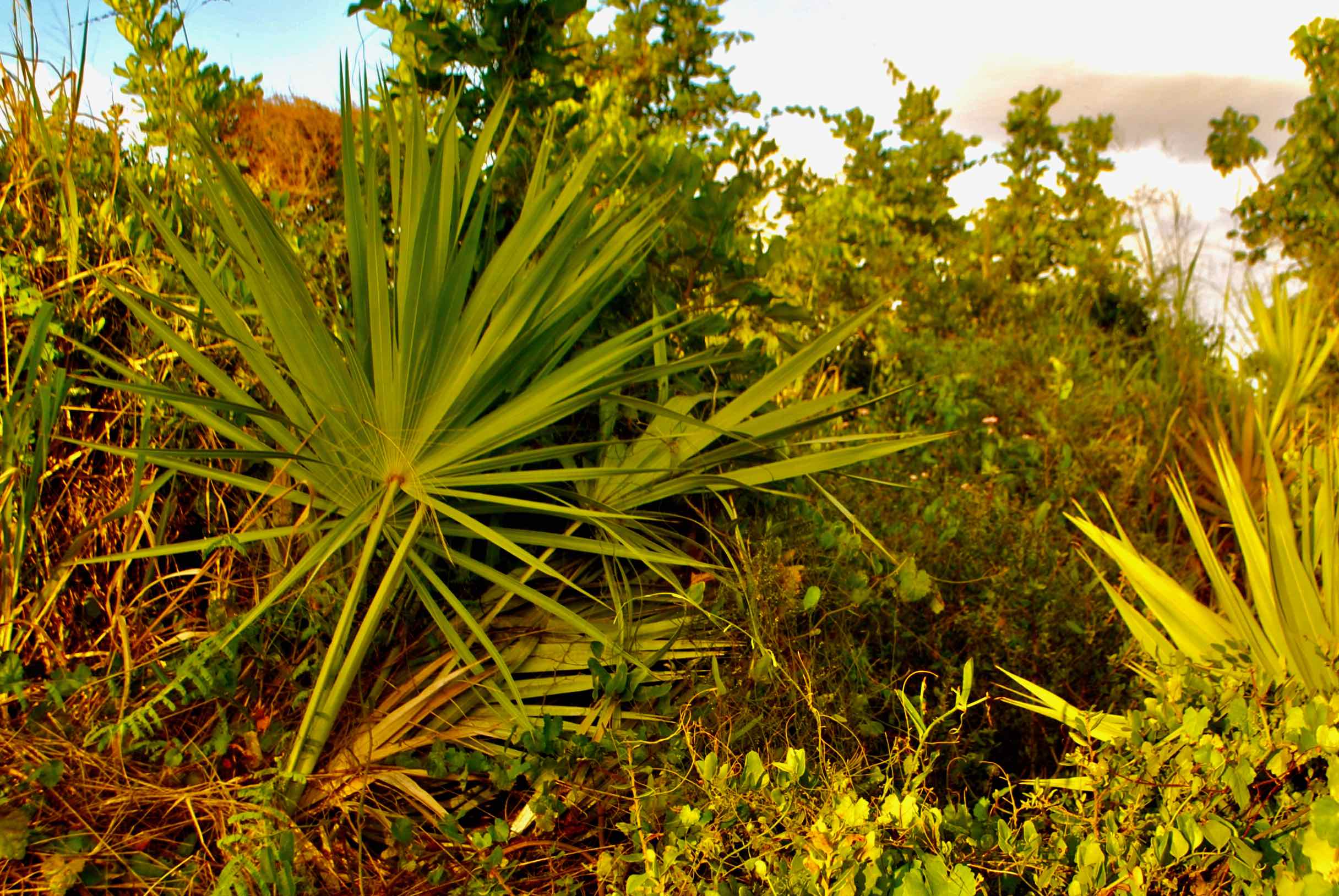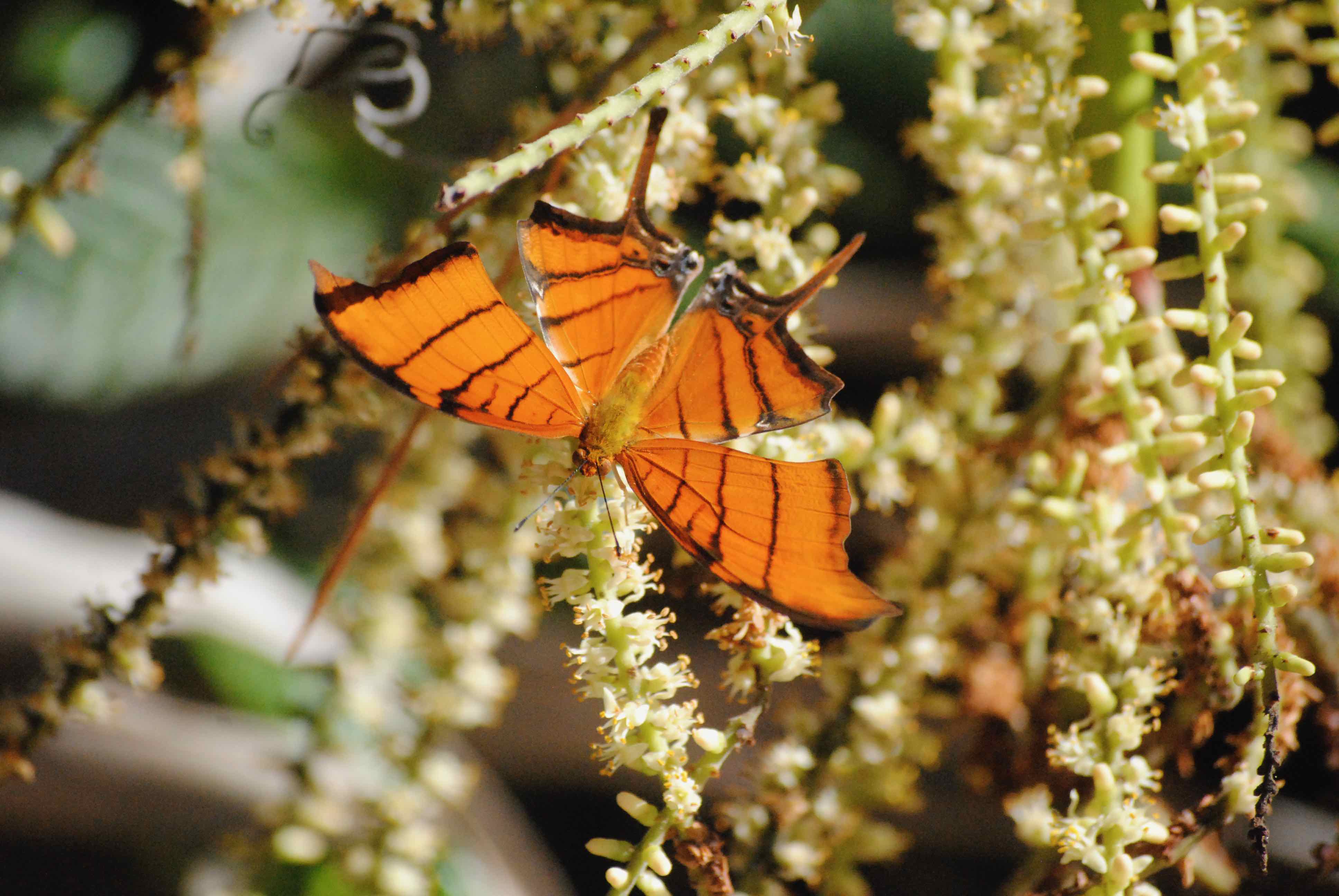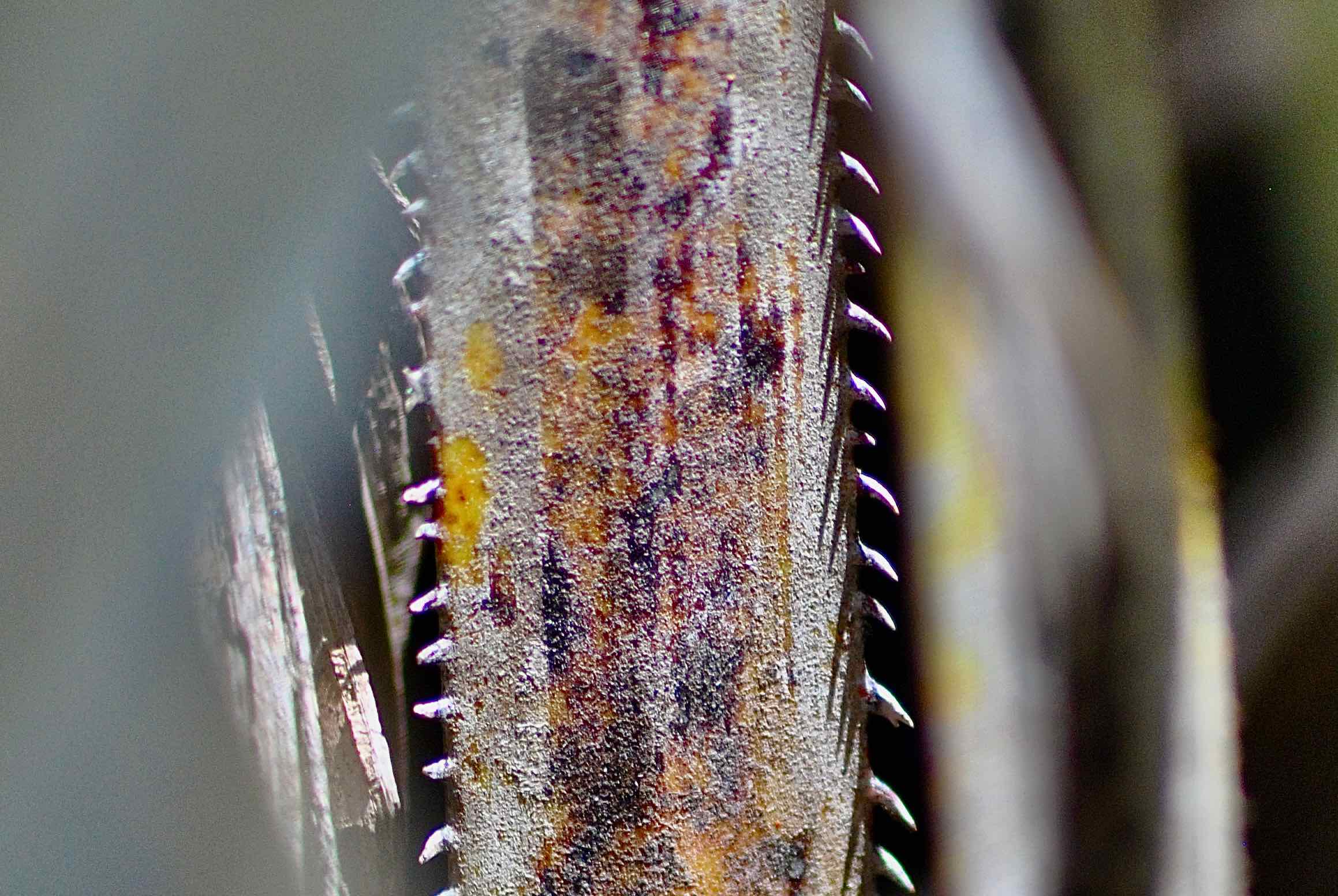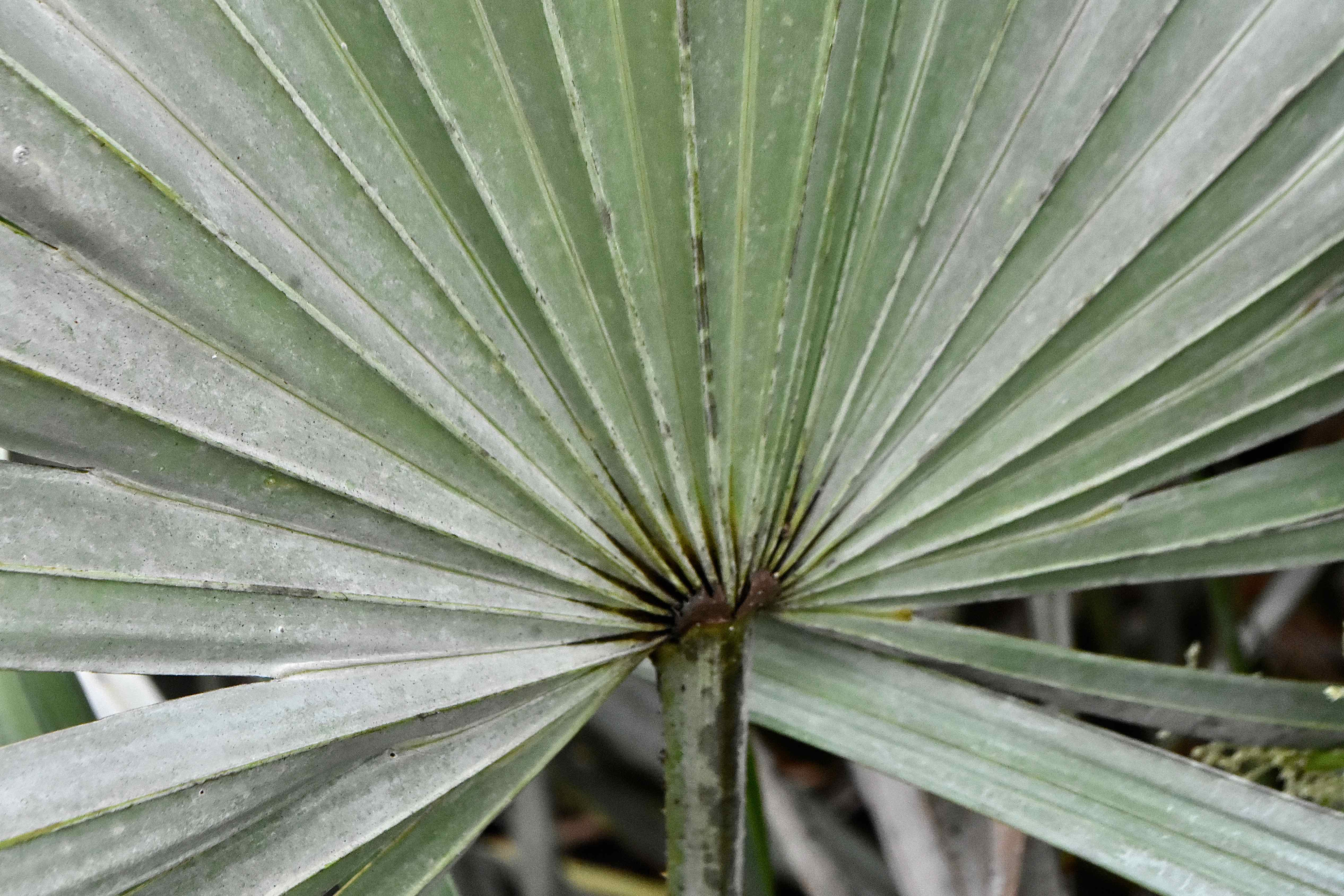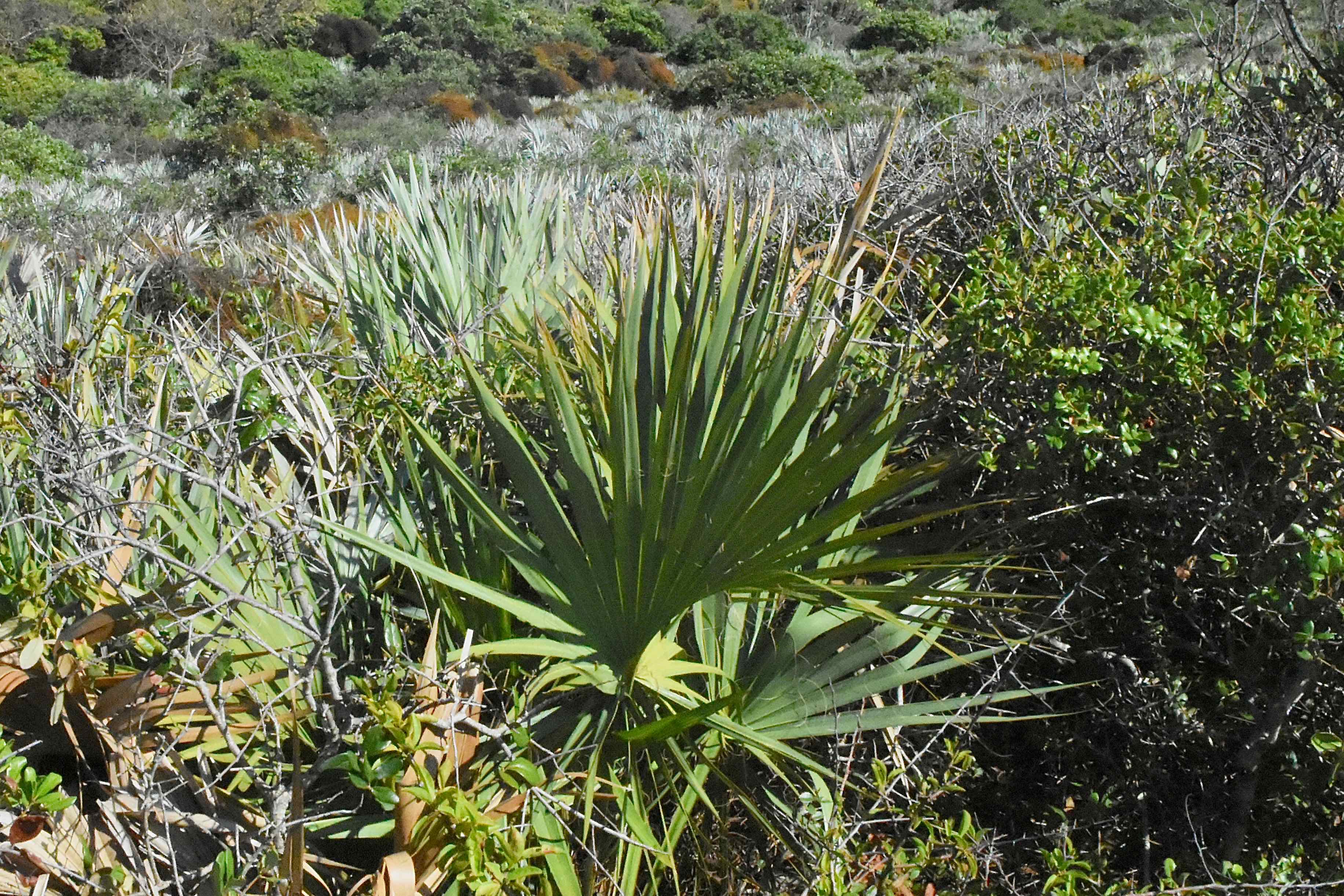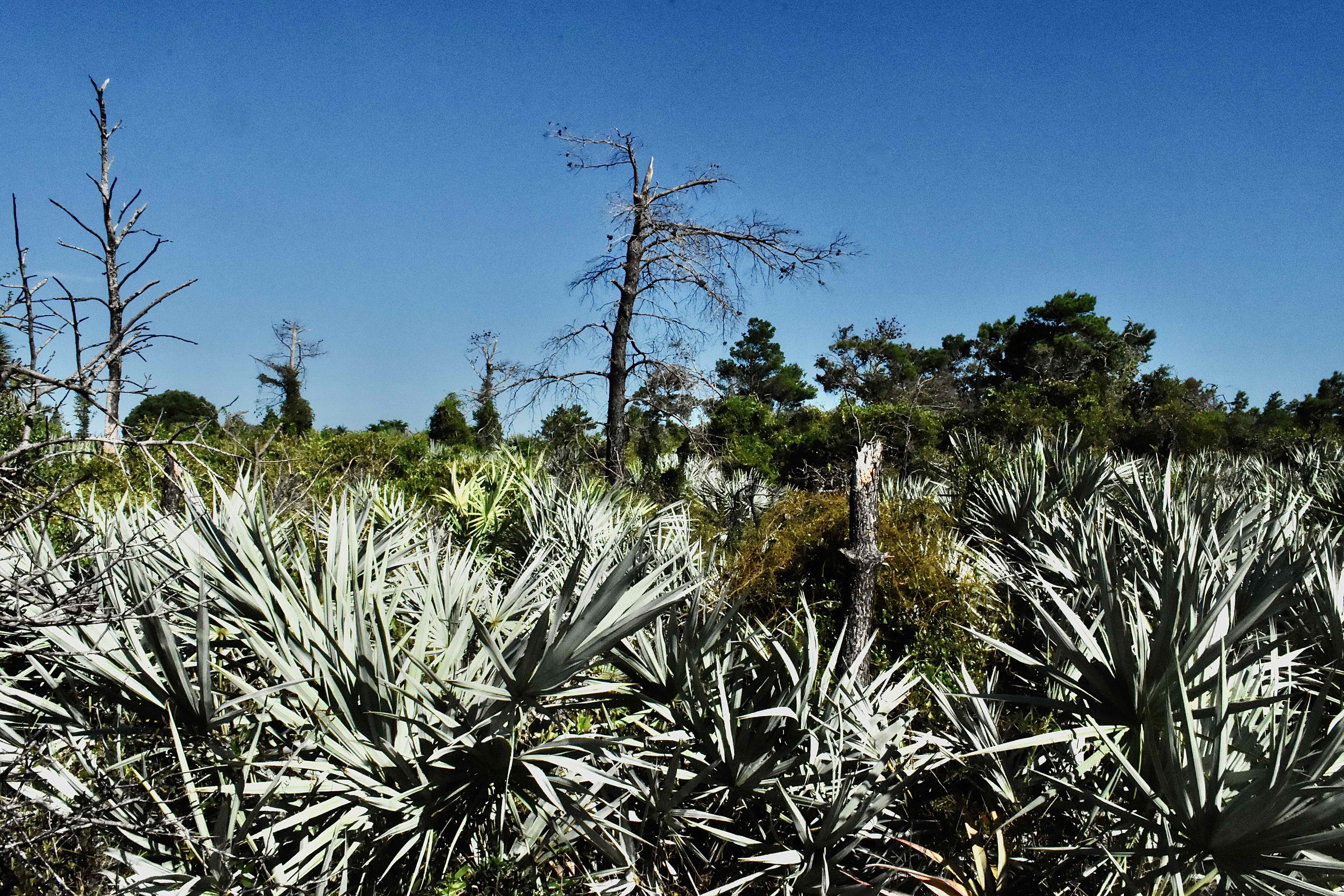
Saw palmetto, photographed at Highlands Scrub Natural Area, Deerfield Beach, Broward County, in July 2016.
Whoever coined the name saw palmetto, Sernoa repens, got it right. If anything, it underplays how tough this plant really is. How about hacksaw palmetto?
The name comes from the sharp teeth that line what scientists call the petioles, or what the rest of us would call leaf stems. They are indeed formidable. Consider that saw palmetto forms dense thickets, then imagine trying to move through them, as early Floridians might done on occasion.
Saw palmetto is a Florida native, found in all of the state's 67 counties, but not mainland Monroe, however. It's also found along the Atlantic and Gulf coastal plains from South Carolina to Louisiana. Some have included North Carolina, Arkansas and Texas in the mix, but the Flora of North America say that's incorrect. In any regard, it's the most abundant palm native to the United States.
It lives in dry habitats, pinelands, dunes and scrubs. We think of it as an upright shrub, sort of a miniature version of the cabbage palm. Palmetto is a Spanish derrivative meaning little palm. But the two are quite different. Saw palmetto often creeps along the ground for a considerable distance before growing upright. That feature isn't apparent if you look at a stand of the stuff, but it becomes obvious after a burn or if you hike along a trail cut through it. The stems are tripping hazards for the unwary. Another difference between the two: the petiole extends into the leaf on the cabbage palm, tapering to a point. Not so on the palmetto (see the first photo, second row, below). That's one key to separating saw palmetto from young cabbage palms. Saw palmetto usually stand four to six feet tall, but occasionally can hit 15. It has fan-like leaves with stems that are lined with extraordinarily sharp teeth, which give the plant its name.
There are two color morphs, or forms, of saw palmetto, according to Flora of North America. There is a green leaf variety that is widespread throughout most of saw palmetto's range and a blue-gray type that is commonly found in southeastern Florida. Note the photo at the top of this page.
The flowers are small, cream-colored and fragrant, blooming year round in South Florida, and in spring in places to our north. They mass on spikes, technically called inflorescences, and come summer and fall, produce a dark berry-like fruit called a drupe that is prized for its medicinal properties. Medicinal or not, the fruit is a favorite of bears, deer, raccoons, fox, opposums and many varieties of birds. The flowers attract bees and other pollinators, including the daggerwing butterflies shown below. In fact, it's the largest natural source of honey in Florida and second overall to the state's citrus industry. The taste of saw palmetto honey is said to be among the best in the world. One odd thing: According to Flora of North America saw palmetto doesn't necessarily bloom or bear fruit each year. Even when the flowers are plentiful, the fruit might not be bountiful. The cause of the variations isn't known.
Saw palmetto is also extremely fire resistant, and that's vital to the plant's success, because it grows in dry areas where fires are frequent. Fire actually stimulates reproduction in saw palmetto. It also reduces competition for water and nutrients from plants that literally can't take the heat.
The tough dense foliage of saw palmetto shelters a huge variety of animals, small and large. Black bears and Florida panthers use saw palmetto thickets to den their young. The plant is so important to bears that some believe there is a correlation between the number of bear offspring in a given year and the abundance of fruit the previous season. Saw palmetto serves as a host plant for the monk and palmetto skippers.
We humans have found saw palmetto extremely useful. Native American tribes used the leaves to make baskets and thatch for their dwellings. The Seminoles used it to make brushes, brooms, dolls, rattles and fishing drags. Both the Seminoles and European settlers used them as fans. Both the Native Americans and white settlers made bedding from the leaves, using different methods. The berries also were eaten as food. Perhaps the most unusual use is this: during the Civil War, saw palmetto fibers were woven into boots for Confederate soldiers
Probably the best-known use of saw palmetto is medicinal, berry extracts for easing the symptoms of BPH, noncancerous enlarged prostate, which causes men to urinate frequently. There is some disagreement as to how it works — some say the berries have chemicals that inhibit the conversion of testosterone into dihydrotestosterone, which enlarges prostates and also causes hair loss. It's been used to treat other conditions — coughs, migraines, bronchitis, asthma — with no clear evidence of its effectiveness. On the other hand, it's generally safe for most people.
Saw palmetto is a member of Arecaeae, the palm family. Another common names: American dwarf palm.
Click on photo for larger image
Links for Saw Palmetto

